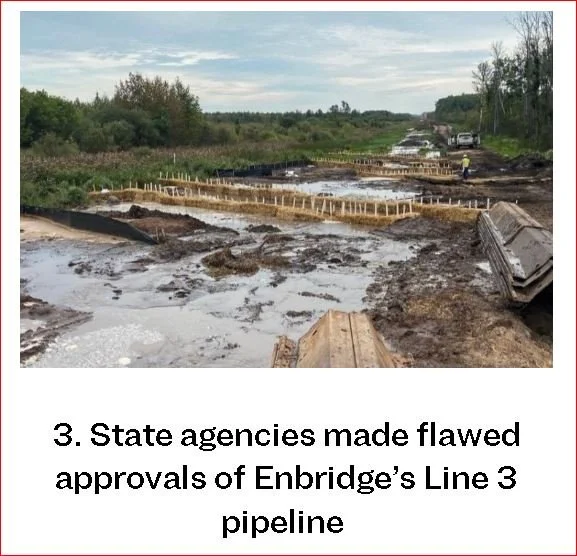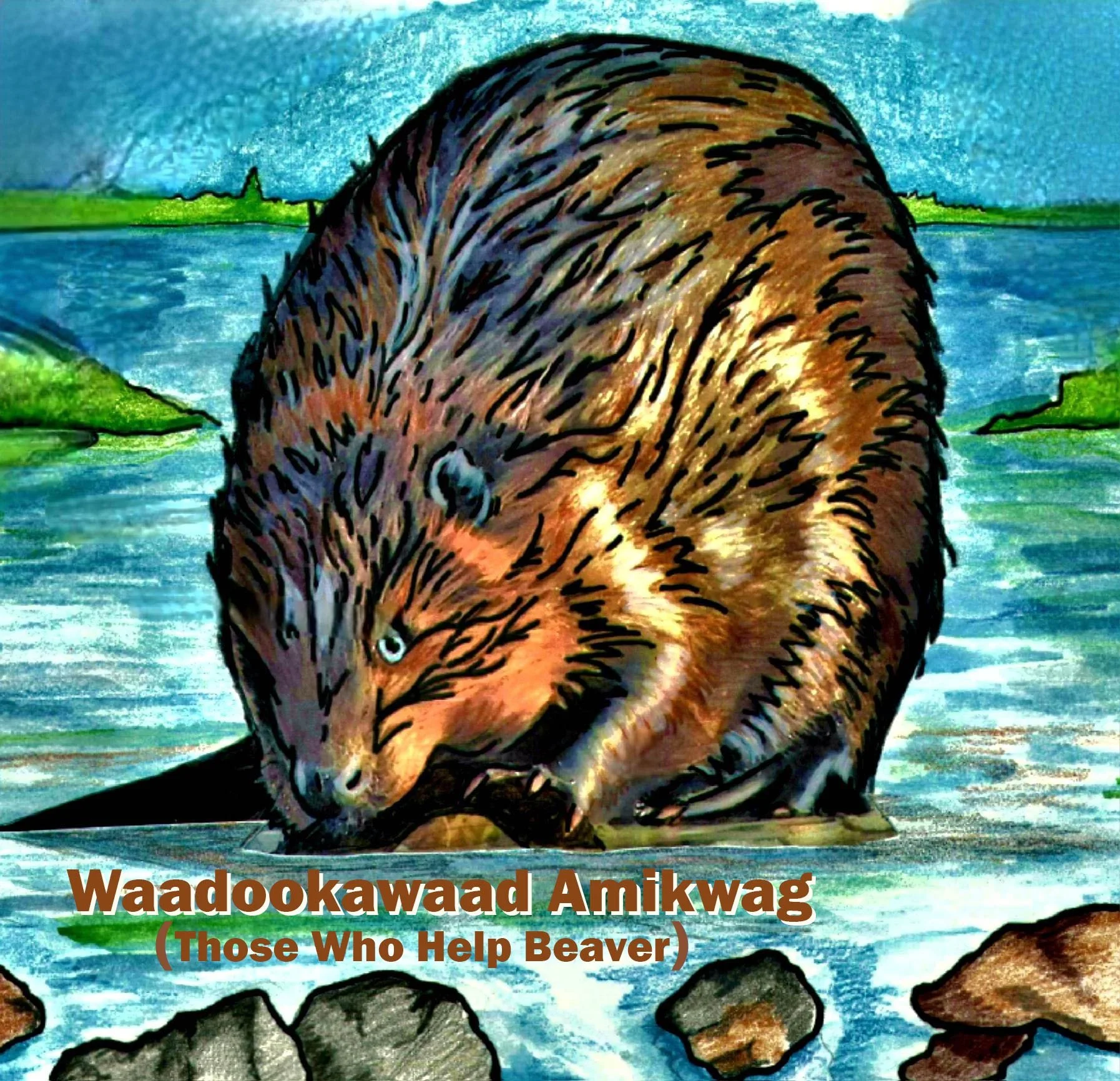Waadookawaad Amikwag is asking Minnesota to:
Prioritize People,
Not Polluters
Minnesota government should do right by its people and protect our communities and natural resources—not polluting companies.
Two of the twelve listed issues are closely related to the work being done by Waadookawaad Amikwag as shown here.
Yet many more issues remain largely unknown to the public.
We support the People Not Polluters website bringing awareness to the ongoing degradation of the world around us, especially in vulnerable places and impacting already vulnerable communities. Some specifics regarding Line 3 and Dewatering are shown here.
We encourage you to visit PeopleNotPolluters.com for more details on these concerns and to learn more about the many other places we need a focused attention on protecting People, not Polluters.
Watch the October PNP Webinar !
Problems: At every major turn in the Line 3 environmental review process, the regulatory system seemed to favor the polluter over the public. The project went against state pipeline routing rules that said they should avoid wetlands and areas with high water tables. (The new Line 3 runs 337 miles across northern Minnesota, crossing more than 200 water bodies and 78 miles of wetlands.) The Line 3 environmental impact statement was flawed, lacking the specific information needed for the required cost-benefit analysis. Regulators saw benefits as concrete and costs as abstract. Decisions went against state policy, such as the goal to reduce fossil fuel use. The project violated Treaty Rights. Line 3 construction resulted in predictable environmental damage, including multiple artesian aquifer breaches.
Regulatory failures: The Public Utilities Commission approved a system of “independent” environmental monitors (IEMs) to do on-the-ground monitoring for state regulators during construction. Enbridge reimbursed state agencies for their salaries. However, Enbridge got to hire and train the IEMs, bringing into question their independence. Efforts to identify hydrological problems were either not done, or weren’t thorough. The Department of Natural Resources (DNR) failed to require detailed information on sheet pilings, which were driven deep into the ground to block groundwater flow and keep trenches dry enough to work. The sheet pilings were responsible for the aquifer breaches. An independent citizen’s group, Waadoodawaad Amikwag, continues to monitor the Line 3 corridor. It has been finding environmental damage caused by Line 3 construction that state regulators have either missed or ignored.
Aquifer breach next to the Fond du Lac Reservation in St. Louis County. The breach released a minimum of 263 million gallons of groundwater. In this location, Line 3 ran through a swamp-shrub carr wetland. The pipeline was installed in the winter. Image: Enbridge report to the DNR.
Weak excuses: In approving Line 3’s water crossing permit, the DNR wrote that Enbridge doesn’t have to follow the pipeline routing rules “if it is not feasible and prudent.” It begs the question: feasible and prudent for whom? The DNR’s order doesn’t say. The clear answer is that it was not feasible and prudent for Enbridge. (The company used that same language in its permit application.) The DNR should do what is feasible and prudent for the public, not a multinational corporation.
Issue: Powerful companies and industries have been allowed to use Minnesota’s groundwater and aquifers with few restrictions. If they plan to pump substantial amounts of water, they need to get a Department of Natural Resources (DNR) permit to dewater. Two examples follow.
Problems: “During the 2021 drought, nearly 800 Minnesota farmers with high-capacity wells pumped 6.5 billion more gallons of water than their permits allowed,” the Star Tribune reported last year. The biggest violator was potato grower R.D. Offutt Co., one of the state’s biggest water users. It accounted for 23 percent of the excess dewatering. Agriculture in general was responsible for 75 percent of excess dewatering. It stressed “already depleted aquifers, lakes and streams and raised the risk that neighboring wells would run dry.” However, agricultural interests “are unlikely to face fines or other consequences because of laws that the DNR says are too lenient,” reported the Star Tribune. Weak laws are a sign of corporate/polluter influence. This past legislative session, the State Legislature passed tougher penalties for those who exceed their dewatering permits.
Enbridge Energy sought a DNR permit to dewater 500 million gallons of water. The Line 3/93 replacement was built through 78 miles of wetlands and other areas with high water tables. It needed to pump a lot of water out of the trenches so workers would have a relatively dry working space. After two months, Enbridge sought to amend its permit to dewater 5 billion gallons — a ten-fold increase — which the DNR approved with no public notice. A DNR section manager said they approved such a large dewatering increase to make sure Enbridge didn’t need to come back to request another amendment. The DNR said Enbridge ultimately dewatered 1 billion gallons, which comes to dewatering 3 million gallons per mile. That was during a drought, when the need should have been less. The state did not require a study on the environmental impact of pumping so much water in a short period of time.
How you can help:
Sign the Petition Urge State Legislators to make agencies do right by Minnesotans and stop giving in to polluters. Ask State Legislators to exercise their oversight power and hold public hearings this summer to scrutinize the outsized polluter influence on our state agencies’ decisions.
Write a Letter to the Editor (LTE) or Op-Ed
o Speak to the need for Minnesota government should do right by its people and protect our communities and natural resources—not polluting companies.
§ Request hearings to discover and examine the reasons why existing statutes were ignored, allowing permits which violated these requirements, which has resulted in devastation to land, air, and water.
One clear example of this failure is the Line 3 Pipeline which allowed a route that traversed “steep slopes” and “wetlands” in direct violation of MN statutes. Other examples abound on the People, Not Polluters site.
Ask your Legislators to hold Hearings on the failures presented on the People, Not Polluters website. Insist that decision-makers answer to the People, that the public voices of those impacted by projects have a place in the processes of permitting and ensuring the voices are heard in the aftermath of projects that bring destruction.
What ideas can you share with Waadookawaad Amikwag? We’ll be glad to update our page with new ideas from our community!! Just email us your ideas.


